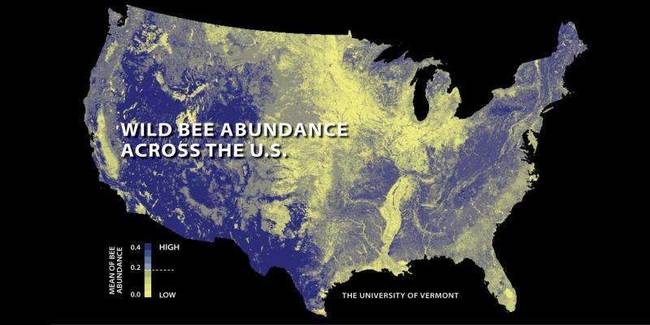A team of researchers created the first national study to map U.S. wild bees. What they found confirms that our native buzzing pollinators are disappearing from many of the country's most vital farmlands, from California's Central Valley and the Midwest corn belt to the Mississippi River valley."If losses of these crucial pollinators continue, the new nationwide assessment indicates that farmers will face increasing costs – and that the problem may even destabilize the nation's crop production," notes the study, the findings of which were published in the Proceedings of the National Academy of Sciences.
Led by Insu Koh, the scientists estimate that wild bee abundance between 2008 and 2013 declined in almost one-quarter of the contiguous U.S. In addition 39 percent of U.S. croplands that rely on pollinators face a potentially debilitating mismatch between increasing demand for pollination and a diminishing supply of wild bees.
"Until this study, we didn't have a national mapped picture about the status of wild bees and their impacts on pollination," says Koh, a researcher at UVM's Gund Institute for Ecological Economics.
The report calls for seven million acres of land to be protected as pollinator habitat over the next five years. "It's clear that pollinators are in trouble," says Taylor Ricketts, the senior author of the study and director of UVM's Gund Institute. "But what's been less clear is where they are in the most trouble – and where their decline will have the most consequence for farms and food."
Source: Treehugger, December 21, 2015
http://www.treehugger.com/sustainable-agriculture/first-ever-national-b…

- Login om te reageren
